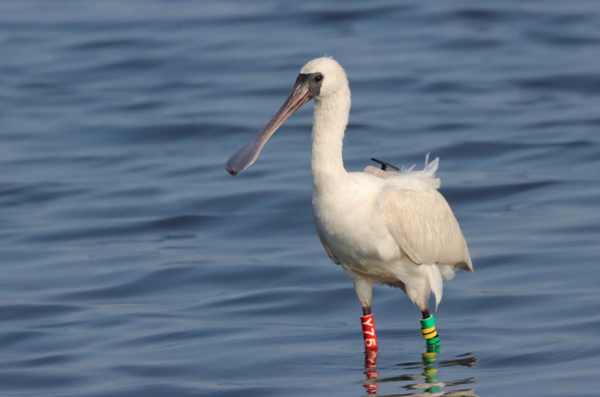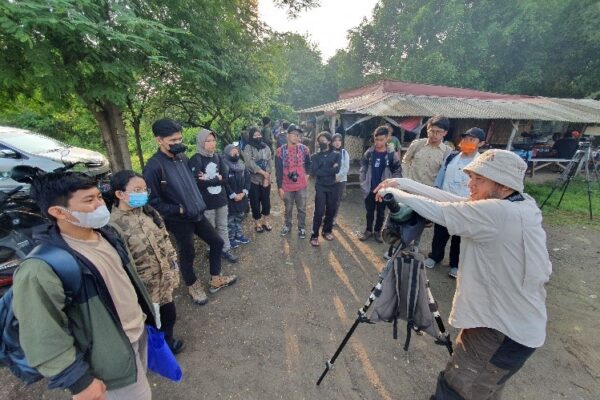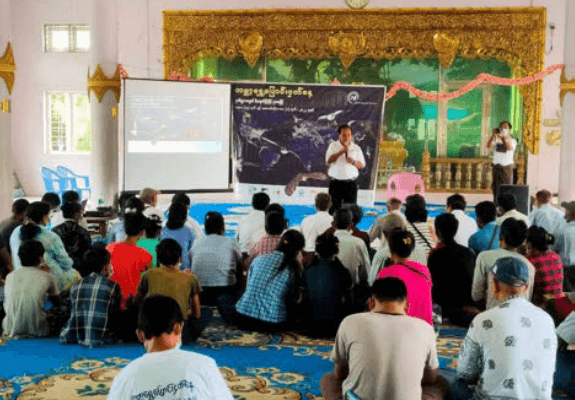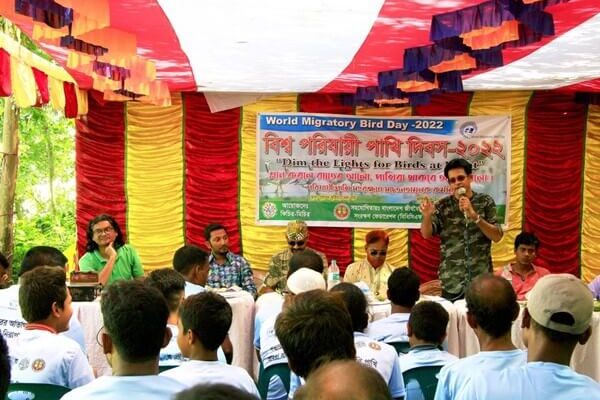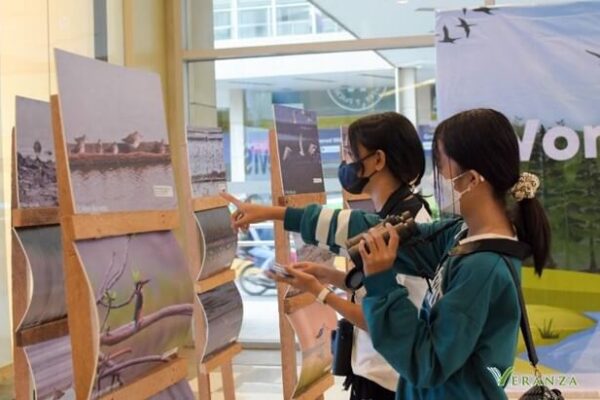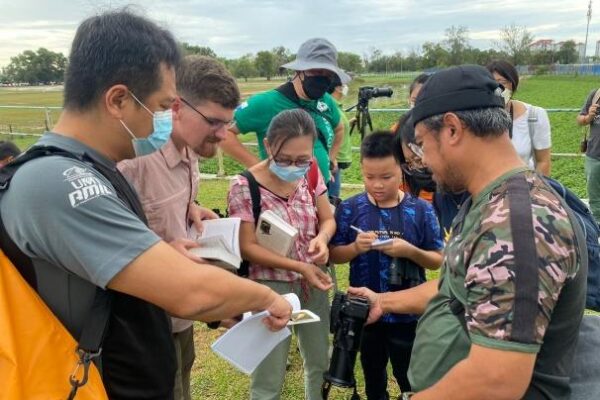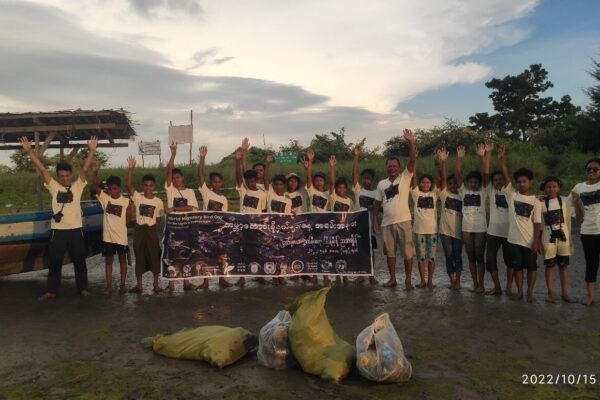-
Juvenile distribution pattern and conservation of the endangered Black-faced Spoonbill
EAAFP Small Grant Fund Project by Chi Yeung Choi, Jimmy Duke Kunshan University The individually-marked Black-faced Spoonbill ‘Y75’, was one of the twenty individuals tagged with satellite tracker. Y75 was ringed on Chilsando, Korea, 2nd July 2020, then seen on Taiwan Island 26th October 2020 ©Yi-Cheng Chen Among the threatened migratory waterbird species in the East Asian–Australasian Flyway (EAAF), the Black-faced Spoonbills (BFS) Platalea minor stands out as one of the very few species showing a recovering trend, from just a few hundred to more than 6,000 over the last 30 years partly due to the extensive conservation effort and BFSs’ ability to utilise artificial wetlands. Over the years, the foraging ecology (Yu et al. 2004a), habitat use (Yu et al. 2004b), threats (Sung et al. 2018) and migration routes (Wood et al. 2013) of BFS have been studied in various locations. Yet relatively little is known about their movement ecology, especially juveniles. In this proposed project, we aim to quantify the wintering distribution pattern of juvenile BFS in their first boreal winter using GPS-GSM transmitters. The ultimate goal is to identify the key regions where juvenile BFS winter and safeguard these areas for the continuous recovery of this endangered population. In 2020 June and July, juvenile BFS were captured near their nests from breeding islands along the west coast of South Korea. Measurements were recorded and unique colour ring combination on the tibia of BFS was used for individual marking. Solar-powered GPS/GSM satellite trackers (19g or 1.3% of juvenile BFS body weight) were deployed to the back of spoonbills using backpack method. Twenty juvenile BFS were captured and equipped with satellite trackers on their back during June and July 2020. Five individuals died without leaving Korea while one individual with tracker failure. In the remaining 14 individuals that left Korea and migrated, 10 of them (71.4%) spent their first winter in mainland China, two (14.3%) on Taiwan Island and two (14.3%) in southeast Japan. Among the 10 individuals that spent their first winter in mainland China, three individuals (30%) stayed in Jiangsu province and another three individuals (30%) in Zhejiang province, while two individuals (20%) resided in Guangdong, one individual in Hainan and one in Anhui. About half of these 14 wintering sites were protected. Among the 14 individuals that left Korea, the one that spent its first winter at the highest latitude (Jiangsu Lianyungang) and the one at the lowest latitude (Hainan) eventually died during their first winter. Our results showed the importance of the coastal wetlands in mainland China, especially those along the Jiangsu, Shanghai and Zhejiang coasts, for juvenile BFS during their southward migration and first winter. All tracked individuals that flew across the Yellow Sea from the west coast of Korea made their first landfall in coastal wetlands along the Jiangsu, Shanghai and Zhejiang coasts. The tracking results indicated the importance of coastal wetlands in Zhejiang Zhoushan, Hangzhou Bay and Wenzhou Bay to juvenile BFS. Moreover, two of the tracked birds that migrated successfully to mainland China for their first winter, eventually died at Lianyungang and Hainan. The cause of mortality was unclear but 35% of tracked BFS died within 6 months after released, showing the challenges that young BFS faced in their early years. It is important to record the potential cause of mortality and mitigate those threats to ensure the continuous population recovery of this endangered species. This project laid the important foundation for further tracking projects that will help researchers to determine the potential drivers for the observed juvenile wintering distribution pattern. This could be achieved by combining the tracking data with findings with annual synchronized censuses. Moreover, the tracking data could also be used to evaluate the extent to which protected areas along the flyway encompass the full range of habitats used by BFS during non-breeding season. The southward migration pathway and wintering distribution of satellite-tracked Black-faced Spoonbills in 2020 References: Sung Y-H, Tse IW-L, & Yu Y-T. 2018. Population trends of the Black-faced Spoonbill Platalea minor: analysis of data from international synchronised censuses. Bird Conservation International, 28(1), 157-167. Wood, C., Tomida, H., Jin-Han, K., Lee, K.S., Cho, H.J., Nishida, S., Ibrahim, J., Hur, W.H., Kim, Yu YT, & Swennen C. 2004a. Feeding of wintering Black-faced Spoonbills in Hong Kong: When and how long? Waterbirds, 27(2), 135-140. Yu YT, & Swennen C. 2004b. Habitat use of the Black-faced Spoonbill. Waterbirds, 27(2), 129-134. The project was funded through the 2020 EAAFP WG/TF Small Grant Fund. View the report, Click here.
Continue reading -
Conservation of Spoon-billed Sandpiper in the Gulf of Mottama and Tanintharyi Coastal of Myanmar
EAAFP Small Grant Fund Project by Pyae Phyo Aung, Shane Thu Lwin and Thura Soe Min Htike Nature Conservation Society – Myanmar (NCS) LCG members are looking the spotting the scope and binocular during the bird watching training © Nature Conservation Society – Myanmar Participation of local communities in conservation is crucial for long-term conservation management. Two local Conservation Groups(LCGs) newly established in The Tanintharyi region are improved their conservation skills through five consecutive bird-watching training sessions. Two LCGs from the area of the Gulf of Mottama are also trained to elaborate their bird-watching, patrolling and conservation skills. Vinyl billboards were installed in the public areas of Myeik and Boke Pyin to raise the awareness of the conservation of migratory shorebirds during their wintering season. This year, 2021-2022 a total of nine national surveyors conducted an annual wintering census survey of Spoon-billed Sandpiper and migratory shorebirds at the Gulf of Mottama and Tanintharyi coastal accompanied by the LCGs members. For the Gulf of Mottama Ramsar site, the survey team covered upper Gulf located in east coastal where recorded 17 and estimated 80 critically endangered Spoon-billed Sandpiper (SBS), based on the SBS proportion in 173 flock counts of over 34,914 birds extrapolated to an estimated 160,000 birds of small waders in the area. These birds were encountered by the team at low tide feeding and widespread across the vast mudflat habitats. Former hunters of the Local Conservation Groups (LCGs) joined the survey and guided the survey team onto the small wader flocks. They were trained and informed about the survey techniques, biology and significance of the species in a regional, national and global context. Providing binoculars to LCG team © Nature Conservation Society – Myanmar Survey team members with LCG at the Gulf of Mottama © Nature Conservation Society – Myanmar Three sites located at the North of Myeik mudflat, recorded ten globally threatened species such as Nordmann’s Green Shank, Great Knot, Chinese Egret, Black-headed Ibis, Bar-tailed Godwit, Black-tailed Godwit, Eurasian Curlew, Curlew Sandpiper, Red-necked/Little Stint and Red-breasted Parakeet. Three sites located at the Bokepyin mudflat, recorded twelve globally threatened species such as single Spoon-billed Sandpiper, Black-tailed Godwit, Bar-tailed Godwit, Eurasian Curlew, Nordmann’s Greenshank. During the project implementation period, NCS keep communicating with the existing LCG members in the Gulf of Mottama for the conservation actions and formation the new LCG team at Tanintharyi coastal region. Tanintharyi costal region is also important for migratory water birds and needs to be conserved as a legal flyway network site or Ramsar Site. Moreover, the NCS team is coordinating with Tanintharyi region Forest Department for the Spoon-billed Sandpiper conservation activities and introducing Tanintharyi coastal as a new flyway network site. Discussion between NCS and Officers from Forest Department for shorebird conservation, Tanintharyi Region via Zoom on 30 November 2021© Nature Conservation Society – Myanmar The project was funded through the 2021 EAAFP WG/TF Small Grant Fund. View the report, Click here.
Continue reading -
Skilled Stakeholder Meets Technology: The Next Step of Migratory Waterbirds Conservation in Indonesia
EAAFP Small Grant Fund Project by Ragil Rihadini Yayasan Ekologi Satwa Alam Liar Indonesia (EKSAI Foundation) Indonesia, is one of the important wintering habitats for migratory waterbirds. With a total of 19.181 km shoreline (KKP, 2019), the information about migratory waterbirds in Indonesia is still little. Most records and information cantered in Java and Sumatra Island, this caused threats on the unknown potential sites (fig.01). Fig.01. Shorebirds Data (in red) from 2016-2022; source: burungnesia app. Many migratory waterbirds' important sites in Indonesia are not protected yet, some other are predicted as important sites but it needs more data and information to confirm that. Unfortunately, some of those areas do not have any birdwatchers who skilled in shorebirds identification. Meanwhile, threats such as hunting, habitat change, and other human disturbance frequently recorded in Indonesia; as the local people rarely understand the importance of conserving the waterbirds. As from our survey before proposing this project to the EAAFP, more than 60% of local birdwatchers are not familiar with waterbirds, and more than 70% are not familiar with migration and shorebirds. This makes us hard to access information about migratory shorebirds in Indonesia, and several times during our survey on new sites, we will find people hunting for waterbirds, simply because they did not know what is that, and how important it is to conserve the birds. The need for skilled birdwatchers as conservation agents: citizen scientists, bird researchers, college students, and government agencies to do regular and systematic surveys on the nearest potential habitat of migratory waterbirds. Fig.02. Field Training of Local Stakeholders in Indonesia Need of coordinated monitoring; cantered data (waterbirds database) that will help the scientists and management coordinator to determine the suitable action for shorebird conservation base on that data and information. With no coordinated monitoring and hunting assessment for migratory waterbird conservation, it will be hard to control threats and protect the birds (Eduardo et al, 2020). Fig.03 (a) the illustration of burungnesia.app (b) the data of Nordmann Greenshank in Indonesia from burungnesia app With support from the East Asia Australasia Flyway Partnership (EAAFP), we were able to combine conservation action and technology through a conservation training activity in Indonesia last November – December, 2022. The small grant from the EAAFP makes us able to reach and develop the shorebirds conservation skills and knowledge of at least 30 of local stakeholders from all around Indonesia (from Papua to Sumatra); covers the government agencies, national parks’ agents, college students, birdwatchers, and local NGOs representative. They got several materials about migratory waterbird conservation during the training: creating a community and research-based conservation program; shorebirds habitat management; shorebirds identification, etc. They also got access to discussing their on-field problems with experts during and after the training. In the process to creating a coordinated monitoring and shorebirds database in Indonesia, we collaborate with our partners in Burungnesia.app; an android application for submitting birds checklists. All the trained participants are mandatory to install and register in Burungnesia.app; they also train on how to submit and using this app. By combining the skilled stakeholders and this technology we hope the data, information, and study about migratory shorebirds in Indonesia will increase, also the conservation action and protection of shorebirds in Indonesia will become a serious attention. The project was funded through the 2022 EAAFP WG/TF Small Grant Fund. View the report, Click here.
Continue reading -
Welcoming the migratory bird for the first time at Paleik Lake in Mandalay region, central Myanmar
On 1 October 2022, Biodiversity And Nature Conservation Association collaborated with the Shwe Kantharyar Nature Conservation Association, a community- based organization in Pyu Lake, and celebrated the first time…
Continue reading -
Celebration of World Migratory Bird Day 2022 in western Bangladesh
With the aim to contribute towards the conservation of migratory birds and their habitats by mitigating threats caused by the local community along a river-adjacent area of western Bangladesh,…
Continue reading -
Celebration of World Migratory Bird Day 2022 in Philippines – “Learning Event and Exhibit” by Ibaraki Academy
The Ibaraki Academy celebrates World Migratory Bird Day 2022, on 8-9 October 2022. The title of the event is “Learning Event and Exhibit” was held at Veranza Mall, General…
Continue reading -
Celebration of World Migratory Bird Day 2022 in Malaysia – The Wonders of Bird Migration Around the Globe
The International Centre from University Sultan Zainal Abidin (UniSZA), in collaboration with the Malaysian Nature Society (MNS), Terengganu Branch and the University of Tripoli, Libya, organized an outing in…
Continue reading -
World Migratory Bird Day 2022 in Hong Kong: Fishpond For Flyway – 10th Anniversary Exhibition of Fishpond Conservation
Since 2012, Hong Kong Bird Watching Society (HKBWS) has been implementing Hong Kong Fishpond Conservation Scheme, which aims to promote fishpond conservation through habitat management, research and education. This…
Continue reading -
Celebrating World Migratory Bird Day in coastal communities around Nijhum Dweep National Park – an EAAFP Flyway Network Site in Bangladesh.
Jagannath University in Bangladesh has been organizing small to large-scale awareness campaigns to motivate and enlighten school students, teachers, and the local community about the importance of conserving migratory…
Continue reading -
World Migratory Bird Day in Nanthar Island Marine National Park, Rakhine State
Nature Conservation Society-Myanmar (NCS) in cooperation with Rakhine Biodiversity and Nature Conservation Association(RBANCA) and the Forest Department organized the second World Migratory Bird Day(WMBD) event for 2022 at the…
Continue reading

